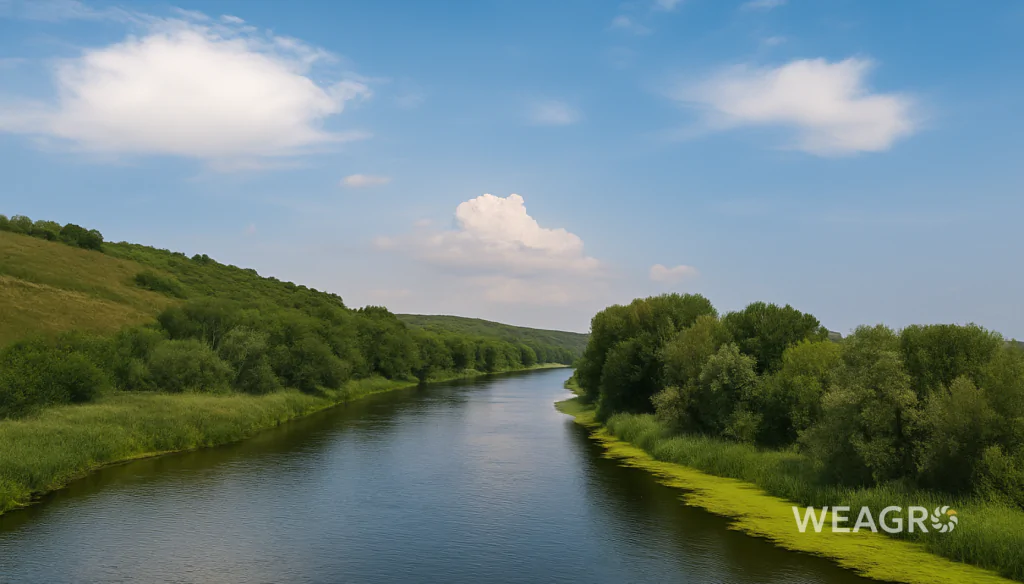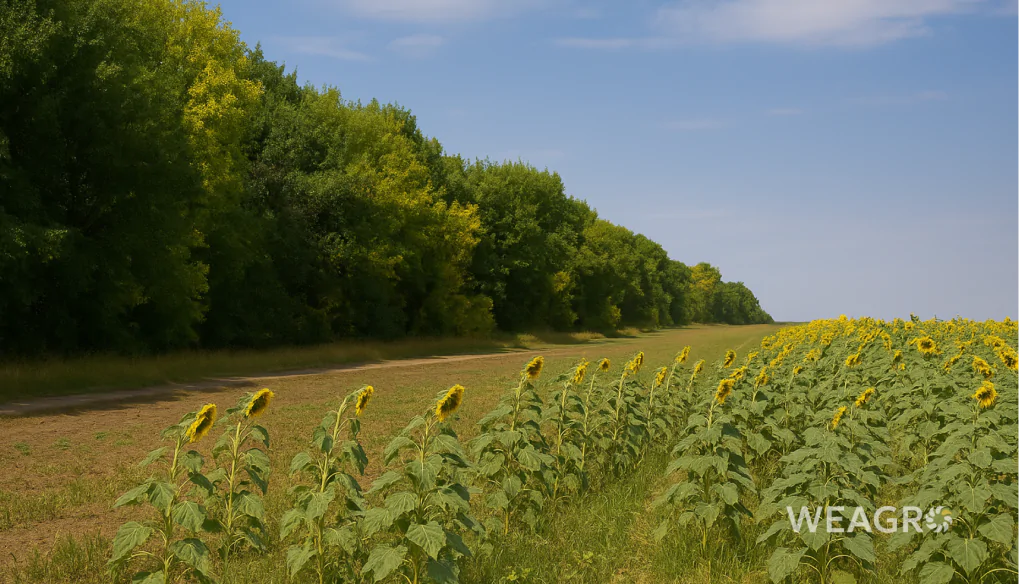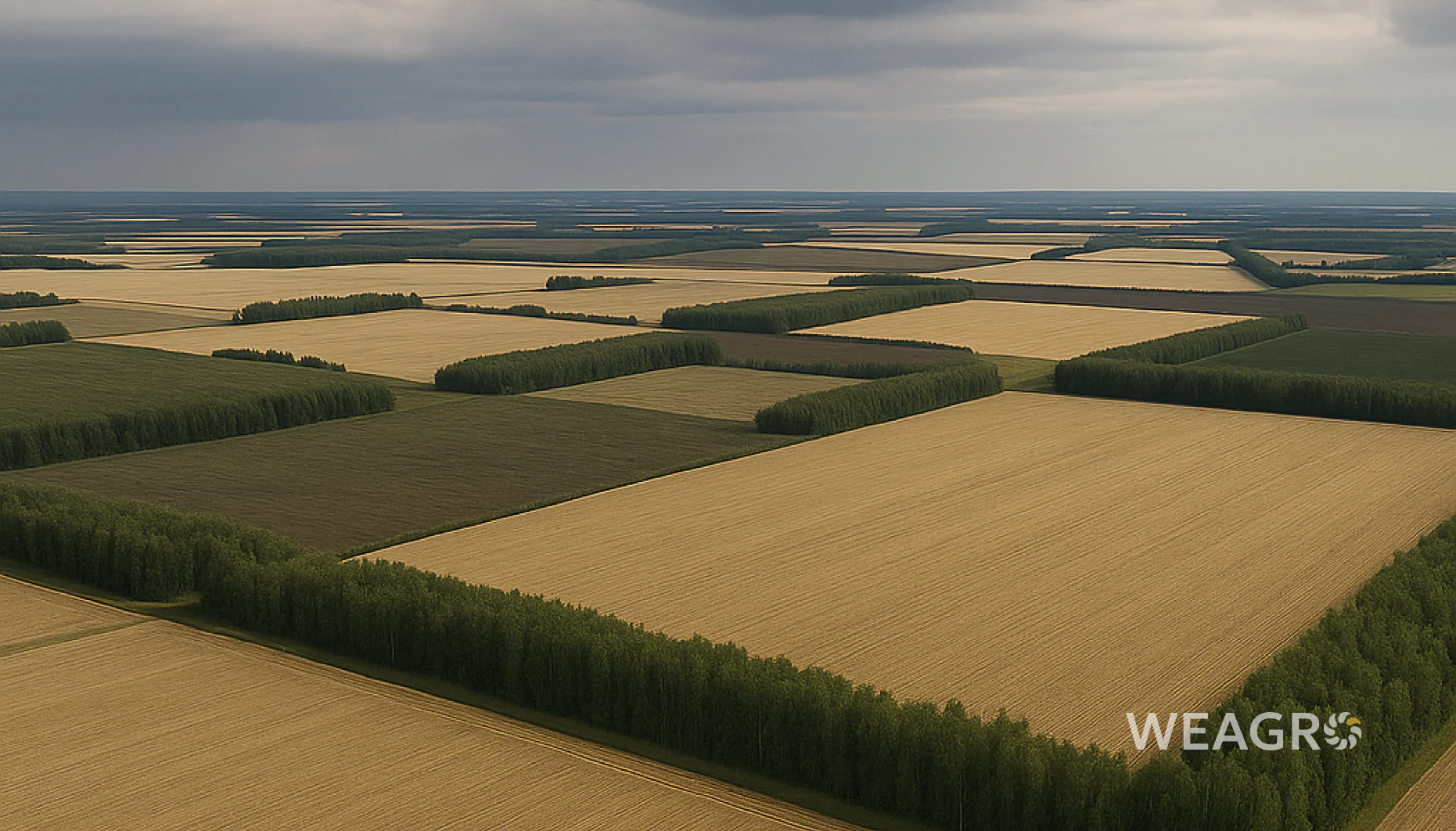Agroforestry is a system of forest plantations aimed at improving soil and weather conditions for growing crops. Today, farmers increasingly face challenges of climate change, erosion, and declining yields. The use of protective forest belts helps effectively combat both wind and water erosion, increases soil fertility, and creates a favorable microclimate for crops. In this article, we will examine the concept of agroforestry development in Ukraine, its benefits for farmers, and prospects for implementation.
The Concept of Agroforestry Development in Ukraine
The concept of agroforestry development was approved by the Cabinet of Ministers of Ukraine on September 18, 2013. Its purpose is to define directions for institutional changes and legislation improvement that will optimize the area of linear protective forest plantations by zonal principle, ensure their effective management, and become an ecological prerequisite for balanced improvement of agricultural landscapes.
There were several initiatives for effective implementation of the main provisions of the Agroforestry Concept – amendments to Ukrainian Laws and bylaws regulating field-protective afforestation. In particular, the necessity of granting environmental protection status to field-protective forest belts, assigning them to business entities, and ensuring economic incentives was justified.
Reasons for the Need of Agroforestry Measures in Ukraine
Agroforestry became a response to numerous environmental and agricultural problems that have intensified over recent decades:
- excessive plowing of land (78% of agricultural land);
- intensification of climate change and aridization;
- degradation of existing protective forest belts;
- ineffective plantation designs;
- incomplete systems of protective plantations;
- primitivization of farming technologies;
- reduction in the creation of new forest reclamation facilities;
- elimination of specialized agroforestry services;
- decrease in scientific support for the industry;
- lack of responsibility for ineffective land use.
The experience of developed countries confirms that protective forest plantations are an important component of modern sustainable agriculture.
Benefits of Agroforestry Measures for Farmers
The implementation of agroforestry methods provides farmers with numerous significant advantages that positively affect both the economic performance of farms and the ecological sustainability of agricultural landscapes.
Protective forest belts increase crop yields. This occurs due to the creation of a favorable microclimate, moisture retention in the soil, and reduction of negative wind effects. According to estimates, yields in fields protected by forest belts can be 15-30% higher compared to unprotected areas.
Economic Benefits of Agroforestry for Farmers:
- Increased soil fertility through reduced erosion and improved soil structure.
- Water savings for irrigation due to better moisture retention.
- Reduced costs for organic fertilizers through natural soil enrichment.
- Decreased losses from droughts and dry winds.
- Resource savings on erosion control measures.
Agroforestry helps ensure stable yields even under adverse weather conditions. Forest belts protect crops from cold winds in spring and heat in summer, creating a more moderate microclimate that positively affects plant development.
Agroforestry Methods

Agroforestry is a comprehensive system that includes various types of protective plantations, each performing specific functions. The effectiveness of measures depends on the correct choice of plantation type and their placement according to specific local conditions.
Let’s examine the main types of protective plantations used in agroforestry.
Creation of Protective Forest Belts
Forest belts are a system of plantations created to protect agricultural lands from negative natural phenomena and improve crop growing conditions. They consist of groups of trees and shrubs planted in a specific order to achieve maximum effect.
Protective forest belts are divided into several types depending on their purpose and location. Each has its own design features and species composition. Properly designed and placed plantations create a comprehensive protection system that works throughout the entire farm territory.
Field-Protective Forest Belts
The main function of field-protective forest belts is to reduce wind speed, which prevents the blowing away of fertile soil layer and provides better conditions for plant growth. Depending on their design, such plantations can reduce indicators at distances up to 30 tree heights.
Field-protective belts also contribute to:
- snow retention in fields;
- reduced soil moisture evaporation;
- lower soil temperature during hot periods;
- protection of plants from harmful effects of dry winds.
The most effective from agronomic and reclamation perspectives are forest belts with permeable design, which have a continuous gap in the lower part while the upper part remains dense.
Water-Regulating Forest Belts
Such plantations are placed precisely across slopes, allowing effective water retention and prevention of water erosion. Depending on location and purpose, water-regulating forest belts are divided into:
- Main belts – 9-12 m wide, placed along contour lines.
- Additional belts – 7-9 m wide, used when main belts don’t provide complete surface runoff regulation.
- Ravine-edge belts – placed along the edge of the hydrographic network.
Water-regulating forest belts are particularly effective on sloped lands where water erosion risk is highest. They not only prevent soil washing but also contribute to groundwater replenishment, which is important in conditions of moisture deficit.
Plantations near Water Bodies
Plantations around ponds and water bodies serve both recreational and soil protection functions. Their main purpose is to prevent bank abrasion (erosion), protect earth dams from wave destruction, and retain solid runoff coming from fields.
In the upper reaches of ponds, silt filters are often arranged using shrub species, which settle fine earth, reducing the risk of water body silting. This helps maintain normal water body function and extends their operational life.
Besides their protective function, such plantations create conditions for recreation, enhance landscape aesthetic value, and promote biodiversity conservation. They serve as home to many plant and animal species, including natural crop pollinators and entomophages that control pest populations.
Plantations on Inconvenient Lands
Forest on inconvenient lands not only protects them from erosion but also improves the overall ecological condition of the territory. Trees and shrubs enrich the air with oxygen, absorb carbon dioxide, trap dust and harmful substances, and moderate the microclimate.
Such plantations can also become a source of additional products: timber, fruits, medicinal raw materials, mushrooms, berries, etc. This creates economic benefits for farmers.
Prospects for Agroforestry Implementation in Ukraine

Agroforestry is a long-term investment that requires significant initial investments but provides stable positive effects for decades. The implementation of the Concept by 2025 should have increased the sustainability of agricultural landscapes, stopped soil erosion, preserved biodiversity, and significantly improved crop yields in protected areas. However, the current situation in Ukraine’s agricultural sector remains critical. Over three years of full-scale war, losses are estimated at over $80 billion. Military actions have dealt a devastating blow to the country’s agricultural potential.
Despite challenges, Ukraine, together with international partners, is developing plans for agricultural sector recovery and development:
FAO Response and Recovery Plan (2025-2026) – a roadmap combining urgent measures with long-term transformations for restoring Ukraine’s disrupted food systems.
Agricultural Development Strategy until 2030 – a government plan that pays special attention to irrigation system restoration in 5 problem regions and support for farmers in frontline territories.
Ukraine’s Irrigation Complex Development Plan – a joint initiative of the Ministry of Agrarian Policy and State Fisheries Agency within the EU “Ukraine Facility” program, approved on March 31, 2025.
Cooperation between farmers, scientists, government institutions, and public organizations will create an effective agroforestry system that ensures sustainable development of Ukraine’s agriculture in the face of global climate challenges.
Conclusion
Agroforestry is an effective tool for increasing the resilience and productivity of agricultural landscapes. Protective forest plantations of various types perform important ecological functions, contributing to soil conservation, improved water regime, and creation of optimal microclimate for agricultural crops.
Implementation of agroforestry methods allows farmers to obtain numerous benefits: from increased yields to reduced costs for fighting erosion or drought. This is particularly relevant in the context of climate change, where the resilience of agroecosystems becomes a key factor for successful farming.
To effectively manage agribusiness, it’s important not only to implement progressive methods but also to have access to financial instruments that enable investments. Our service WEAGRO offers agricultural installment plans that help farmers quickly and conveniently purchase necessary goods and services for farm development. This allows farmers to obtain payment deferrals on favorable terms, enabling effective distribution of financial resources and investment in important areas such as agroforestry.









